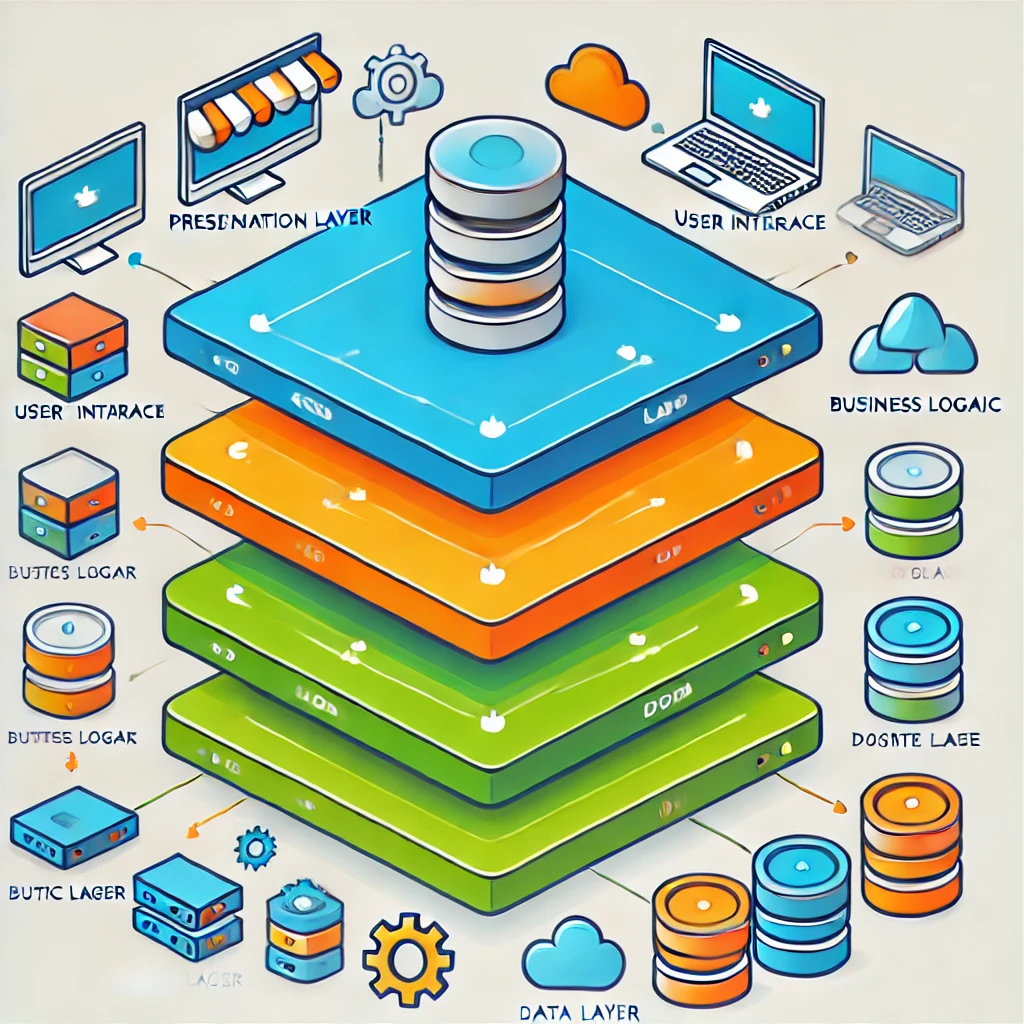The Multi-Tier Architectural Pattern. Making complex things *simple*
 Tanishka Marrott
Tanishka Marrott
I’ve been in the cloud for quite a few years now; and among the most widely adopted and trusted approaches is the multi-tier design pattern. The reason for this? It elegantly divides an application into its core components, making it easier to manage and scale.
So, yes, this is a generic framework where we’re simplifying complex systems into:
“Chunks that are manageable”
“Chunks that are independently scalable”
By doing this, we’re effectively “decoupling” the application components. These components can then be developed, deployed and maintained by individual teams, allowing for independent upgrades and scaling. This brings flexibility, availability and fault tolerance into our design.
Sounds good? Great. Let’s dive deeper.
The Boilerplate Essentials
As we venture into developing a multi-tier application, we must acknowledge that certain code elements will remain consistent across various implementations:
Security-related Code: This pertains to restricting access and ensuring that our application remains safe from unauthorized entry.
API Definitions: Code that defines how different parts of our application communicate with each other and with the outside world.
Message Queue Setup: Since the network serves as the boundary between two tiers, we will utilize a message queue to facilitate inter-tier communication, ensuring efficient data transfer and processing.
These can be viewed as boilerplate components, fundamental to many applications, but not heavily varied in their implementation.
Embracing Serverless Offerings
When creating such multi-tier applications, leveraging serverless offerings becomes crucial. Think AWS Lambda and API Gateway. By using these services, you can:
- Abstract Infrastructure Management: Focus solely on your code, not on underlying infrastructure like OS management or server issues.
This allows us to channel our energy into what truly matters—developing a robust application without getting bogged down by the minutiae of server management.
Layers of a Multi-Tier Application
Imagine this: your application is a bustling city, complete with roads, utilities and districts. Similarly, your application has three primary layers—each responsible for distinct tasks:
1. The Presentation Layer
This is the face of the city—where users interact, be it through a web interface or a mobile app. User action begins here, where first impressions are formed. The design and user experience are crucial in this layer, as they dictate how users perceive and engage with your application.
2. The Logic Layer
Behind the scenes, just like a city’s gov body, this layer processes user requests, makes decisions & manages business rules. It’s the “brain” of the application, translating user actions into tangible results. Here, data processing and business functionality converge, making it vital for performance and responsiveness.
3. The Data Layer
This serves as the vault—storing all critical information. Whether utilizing a NoSQL database or a relational one, this layer ensures that data is stored, retrieved, and managed effectively. Its design impacts the overall efficiency and scalability of your application.
The Serverless Logic Tier
Now, let’s delve into the serverless logic tier, where functionality truly shines. This tier encompasses data processing and the core business logic of your application. Managed services like AWS Lambda and API Gateway play pivotal roles here.
What is AWS Lambda?
AWS Lambda is a compute service that allows you to execute code in response to events without provisioning or managing servers. You simply upload your code, specify the event that should trigger it & Lambda takes care of everything required to run and scale your code.
The Value-Add in the Logic Tier
Lambda adds immense value to the logic tier by:
Enabling Rapid Development: Developers can quickly write and deploy functions that respond to specific triggers without the overhead of managing infrastructure.
Scaling Automatically: Lambda scales your application by running code in response to each trigger, maintaining performance as demand fluctuates.
How Lambda and API Gateway Work Together
When paired with API Gateway, Lambda allows for seamless API management. API Gateway handles incoming requests, routing them to the appropriate Lambda function. This architecture not only enhances performance but also simplifies the management of your APIs.
Real-World Insights
Having worked with these technologies extensively, I can attest to their transformative impact on application development. For instance, in one of my projects, we integrated AWS Lambda and API Gateway to create a real-time data processing application. The flexibility offered by serverless architecture allowed us to scale effortlessly as our user base grew.
Through this architecture, we witnessed significant improvements in both response time and cost-efficiency. Serverless components only incur costs when they’re in use, which is a game changer for budget-conscious projects.
Conclusion
In summary, the multi-tier design pattern, enhanced by serverless technologies, empowers us to build scalable, robust applications efficiently. By decoupling components and leveraging services like AWS Lambda and API Gateway, we can focus on delivering value without getting tangled in the complexities of infrastructure management.
So, whether you’re just starting your cloud journey or looking to refine your existing architectures, embracing this approach will set you on a path to success. Let’s continue to innovate and shape the future of application design—one tier at a time!
Subscribe to my newsletter
Read articles from Tanishka Marrott directly inside your inbox. Subscribe to the newsletter, and don't miss out.
Written by

Tanishka Marrott
Tanishka Marrott
I'm a results-oriented cloud architect passionate about designing resilient cloud solutions. I specialize in building scalable architectures that meet business needs and are agile. With a strong focus on scalability, performance, and security, I ensure solutions are adaptable. My DevSecOps foundation allows me to embed security into CI/CD pipelines, optimizing deployments for security and efficiency. At Quantiphi, I led security initiatives, boosting compliance from 65% to 90%. Expertise in data engineering, system design, serverless solutions, and real-time data analytics drives my enthusiasm for transforming ideas into impactful solutions. I'm dedicated to refining cloud infrastructures and continuously improving designs. If our goals align, feel free to message me. I'd be happy to connect!